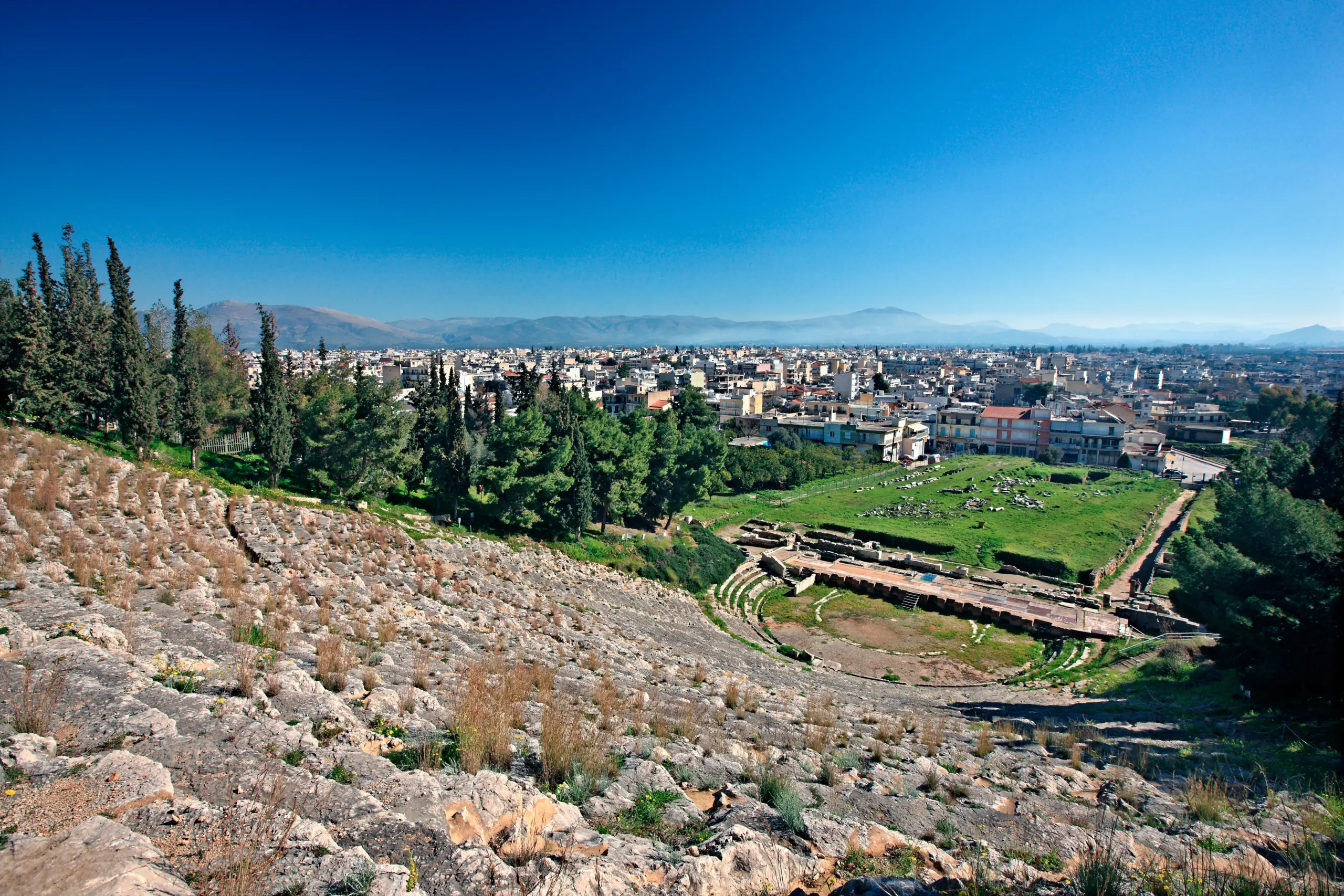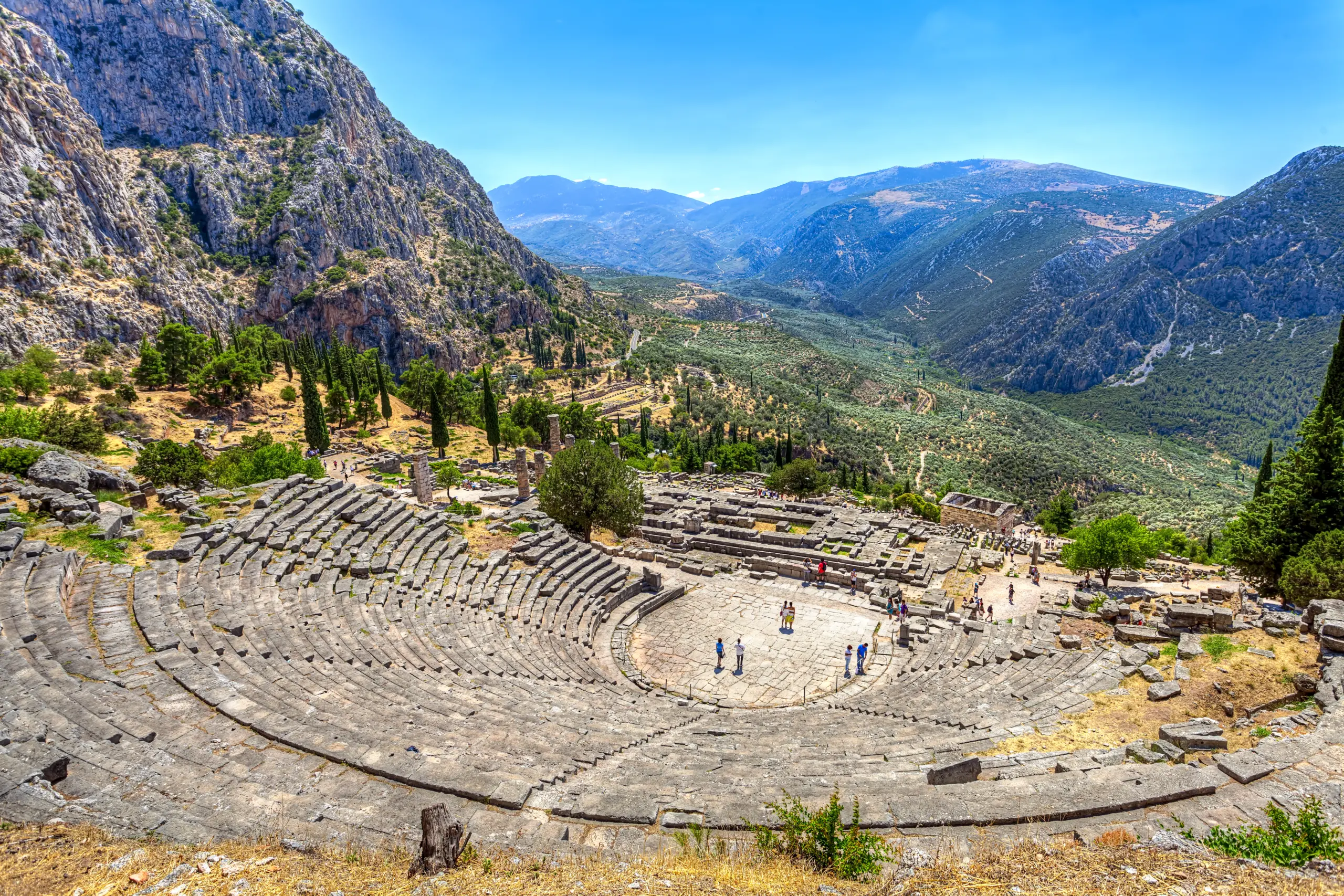Let's go to the theater!
Your intro guide to ancient Greek theaters
The ancient Greeks had a deep love for storytelling. But Greek theatre was not just about entertainment.
It began as a way to honour the Greek gods, and evolved into acts of public responsibility and citizenship. Through the tragedies and comedies performed, Greeks were encouraged to reflect on their roles in society, debate issues, and exchange political and religious ideas. These theatres set the stage for modern theatre as we know it today.

Ancient Greek theaters are celebrated for more than just the epic performances they hosted. Their brilliant design optimized both the visuals and acoustics of every show.
Here are the key architectural features that made them so incredible:
Materials matter
The materials used to build Greek theaters were very strategically chosen. Originally, wood was used in the stage and seating area, but this was soon replaced by limestone and marble. This was not only an aesthetic choice, but these materials played a significant role in enhancing acoustics.
Both marble and limestone have smooth surfaces, high density, and rigidity. These materials absorb minimal sound, allowing sound waves to bounce off the surface, while their smooth surfaces are less likely to diffuse sound waves, creating a clearer sound quality.
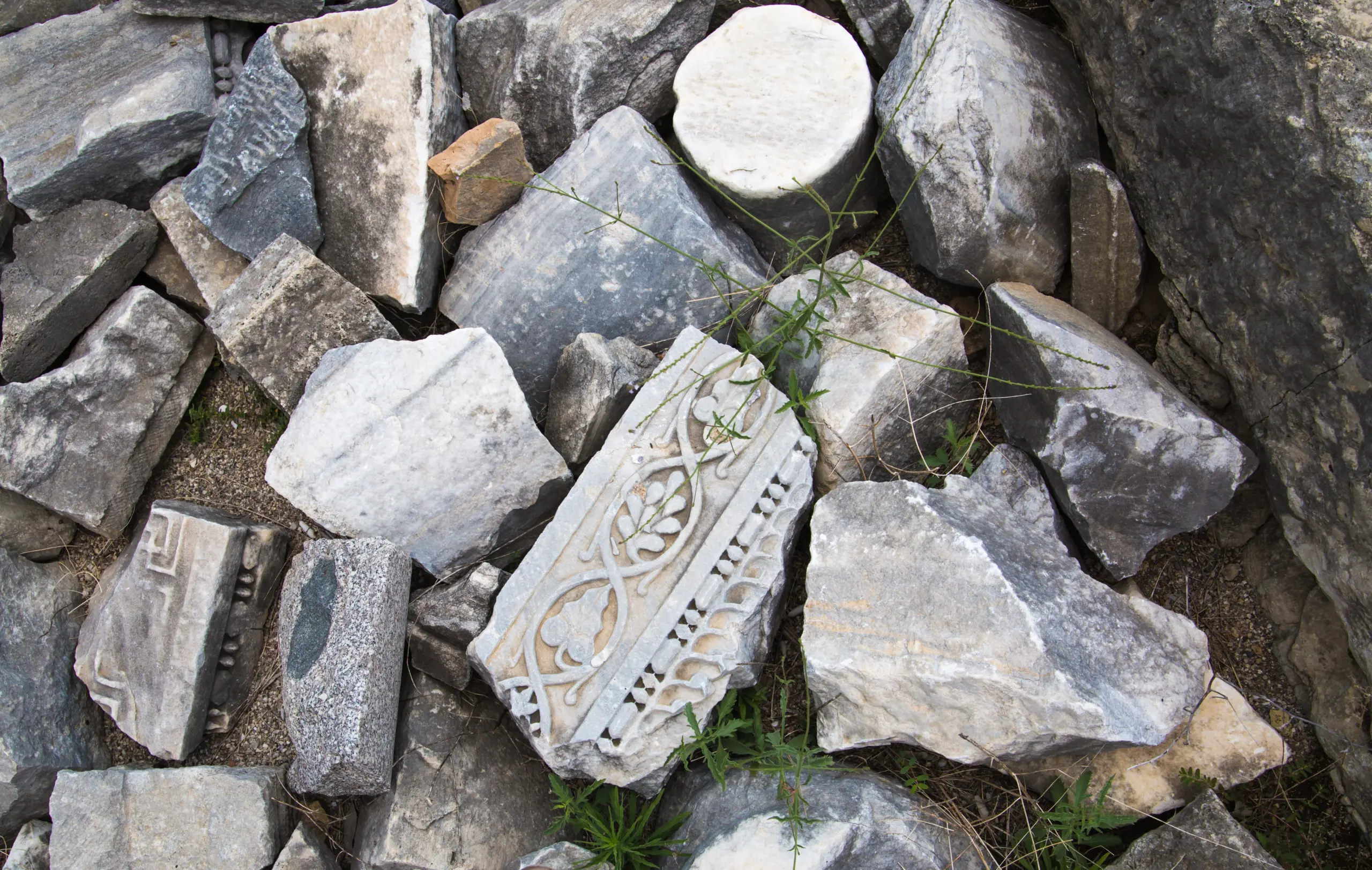
A position of power
The stunning landscapes that surround Greek theaters are no coincidence. Theaters were placed in locations that offered spectacular views and enhanced the dramatic effect of the performances. Proximity to religious sites, such as temples and oracles, reinforced the connection between theater, religion, and community. The Theater of Delphi, pictured on the right, overlooks the sanctuary of Apollo to enhance the spiritual and dramatic impact of its performances. Theaters were also often positioned to maximize natural acoustics, with consideration given to prevailing wind directions.

Reflect & reverberate
The skene was a pivotal building situated behind the orchestra in ancient Greek theaters. Initially a simple tent or hut, it evolved over the years into a more permanent and elaborate structure with columns, balconies, and multiple doors. Actors used the skene as a changing area for costumes and masks, and it also stored props and scenery. Often painted and intricately decorated, it served not only as a stunning backdrop for performances but also as a reflective surface that enhanced sound projection towards the audience.
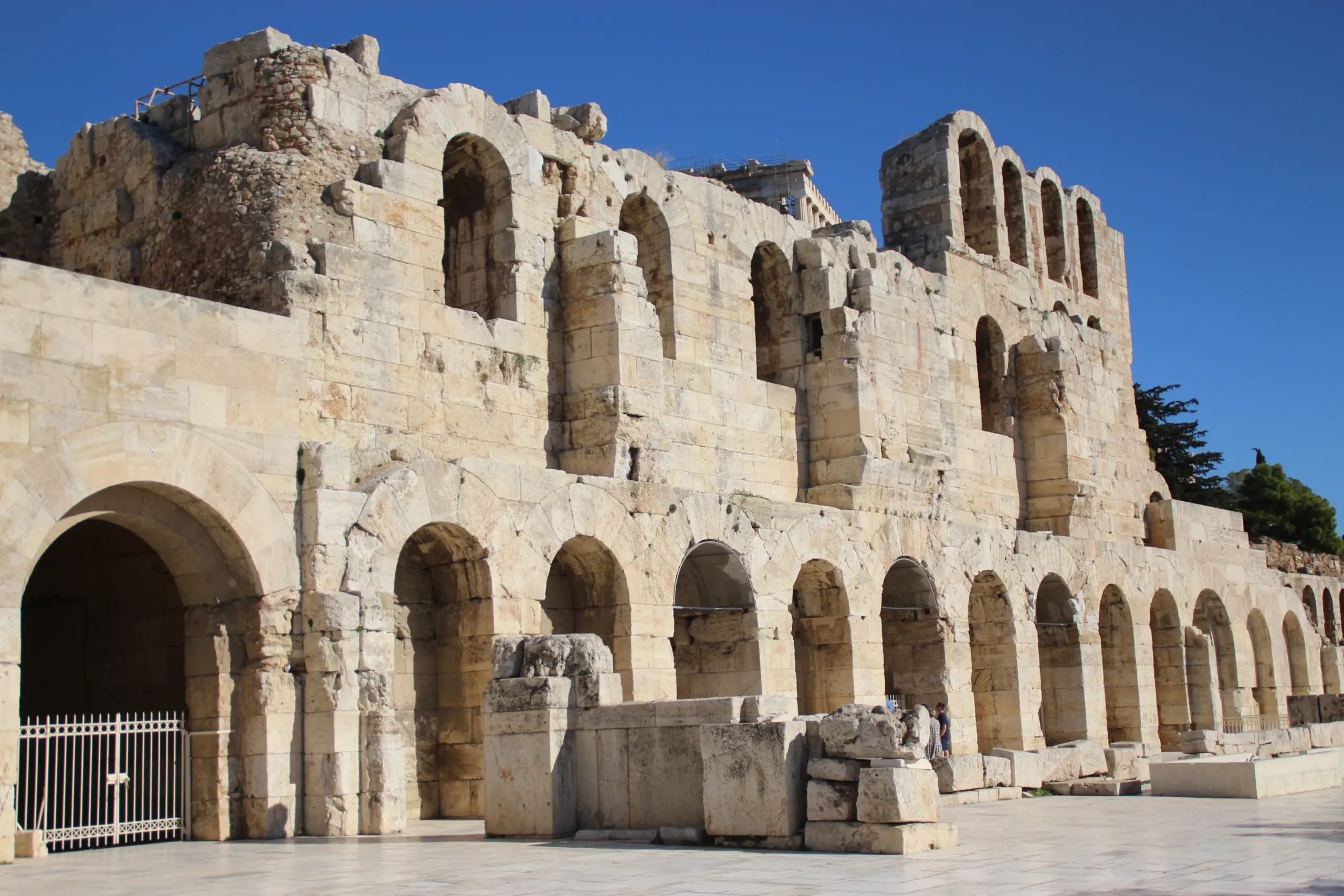
Seating worthy of a standing ovation
Greek theaters were designed to accommodate large audiences, often holding up to 15,000-20,000 spectators. To accommodate this, the theatron, or seating area, was often built into a hillside to improve sightlines and enhance sound distribution. Rows of seats were also curved to concentrate sound towards the center so even the back rows could hear the performers clearly.
Fun fact: seating in Greek theaters was hierarchical. The front row seats, known as proedria, were reserved for dignitaries and priests. These seats were often more elaborately carved and had backs for added comfort, while the general populace occupied the higher tiers.
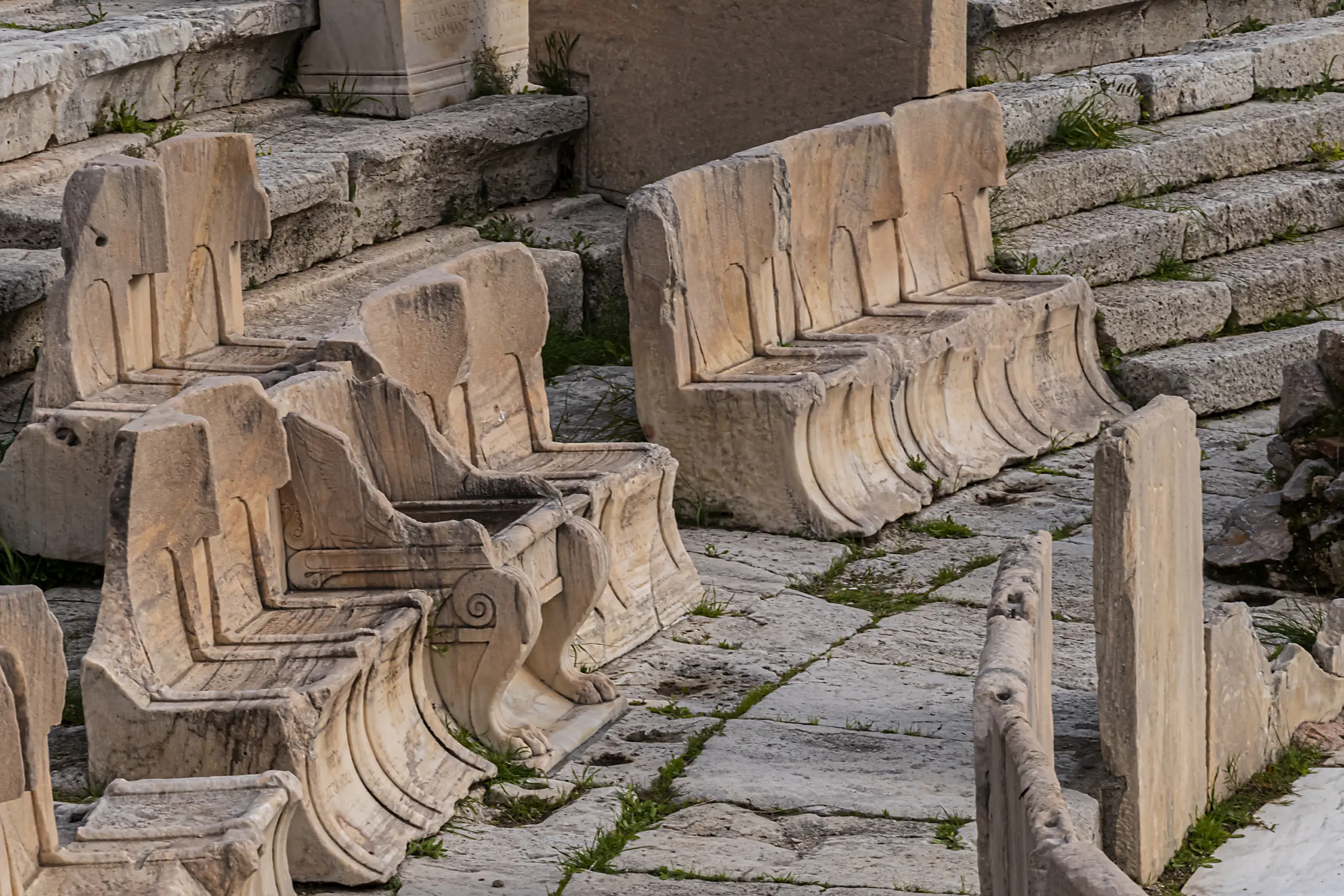
Famous Greek plays:
These plays not only showcase the complexity of Greek storytelling but also reflect the cultural, social, and philosophical concerns of their time.
Oedipus Rex
by Sophocles
“Oedipus Rex” follows the story of Oedipus, the king of Thebes, who is determined to save his city from a devastating plague. The twist? He discovers he’s been living a prophecy nightmare—having killed his own father and married his mother, all without knowing. As he digs deeper to find the truth, everything unravels in a whirlwind of fate, blindness (both literal and metaphorical), and tragic irony.
Antigone
by Sophocles
“Antigone” is a timeless tale of rebellion and the heavy price of standing up for what you believe in. After Antigone’s brothers kill each other in a battle for the throne, King Creon decrees that one brother will be honoured, while the other will be left unburied. Defying Creon’s orders, Antigone risks everything to give her brother a proper burial. This bold move sparks a tragic chain of events, highlighting themes of justice, loyalty, and the struggle between individual rights and state power.
The Clouds
by Aristophanes
“The Clouds” is a satirical comedy that takes a hilarious jab at intellectual fashions in classical Athens. The play centers on Strepsiades, a debt-ridden farmer desperate to dodge his creditors. He enrolls in the “Thinkery,” a philosophical school run by none other than Socrates, hoping to learn the art of clever argument to get out of paying his debts. What ensues is a comedic critique of philosophical pretensions, as Strepsiades’ efforts lead to absurd and chaotic results.
Medea
by Euripides
This classic Greek tragedy tells the story of Medea, who is betrayed by her husband Jason when he leaves her for another woman. Medea isn’t the type to take betrayal lying down. She decides to strike at the core of Jason’s heart by murdering their two children. This act of ultimate vengeance is both a punishment for Jason and a tragic demonstration of Medea’s anguish and desperation.
Iconic theaters to look out for:
These stunning sites are worth adding to your Greece travel checklist. Their fascinating architecture set in striking landscapes are sure to knock your socks off!
Why read about it?
Discover these ancient theaters on tour!
Iconic Greece & the Cyclades
With some of Europe’s oldest civilizations developing in this country, impressive monuments still stand as proof of the empires that once called the ancient Panhellenic capital home. While the mainland’s architecture will take you on a trip through time, the Cyclades of Mykonos and Santorini will inspire you to cherish the simpler things in life. Endless blue seas, whitewashed buildings at dramatic angles and pink skies play backdrop to the distinctive cultural heritage and fascinating local traditions of a millennia-old and multifaceted civilization. Local favourites of fresh seafood, strong Ouzo liquor, sun-filled tomatoes, perfectly ripe olives and organic feta cheese will quickly become yours, too.
Departures: April, May & September 2025

